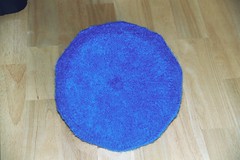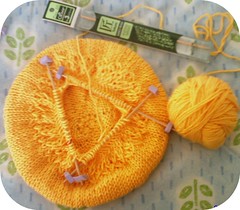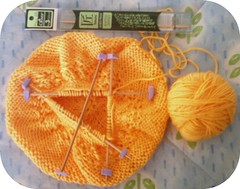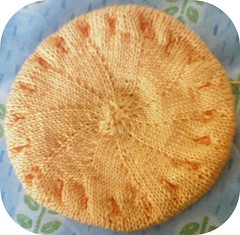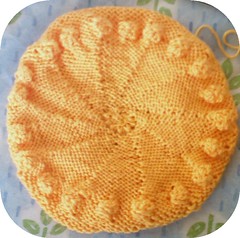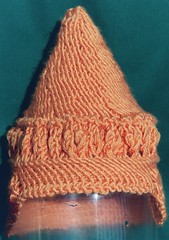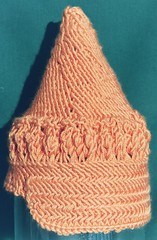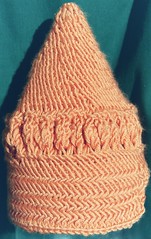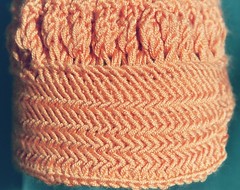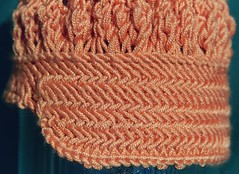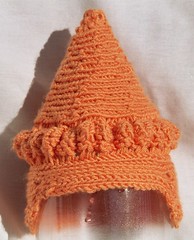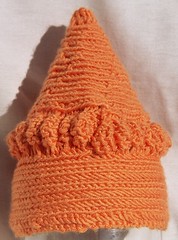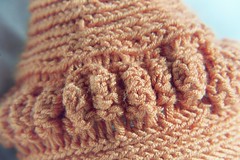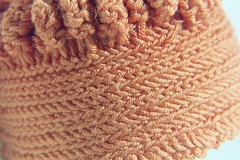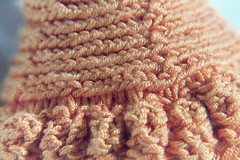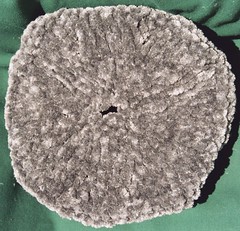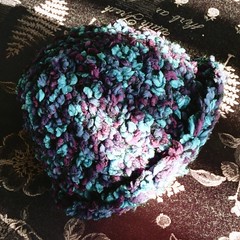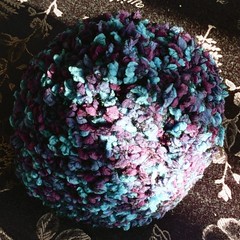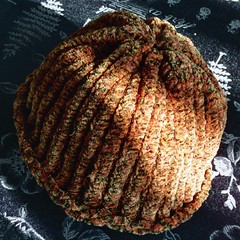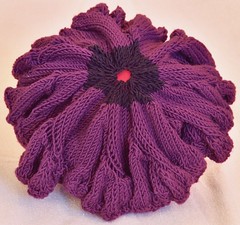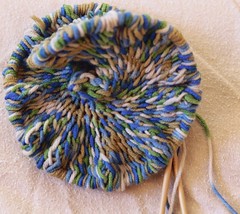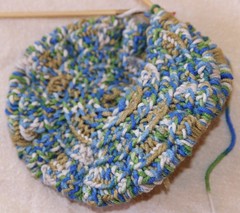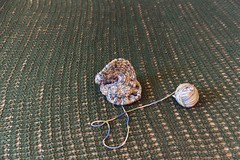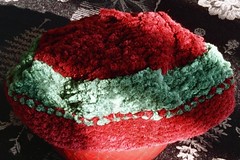
Every once in awhile it’s good to go backwards, and look how far we’ve come in creating craft. This little chenille hat was one of the first Mac ever made. It’s soft and cuddly …and looks like it ought to go with a fuzzy burgundy and gray dashiki. The first hats we made were more caps – it just seemed like so many stitches couldn’t be quite right! So they were mostly shallow and caplike, but still really nice, and I have to admit that Mac has had a penchant for creating fun hats sans patterns… creating is sometimes just not as much fun if you have to follow someone else’s lead. – TadMack
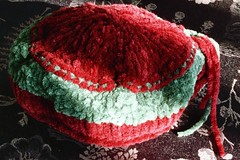
Mac: I especially like the intermingling of the two colors of yarn, more easily visible from the wrong side. The chenille’s not a particularly plush variety – just Red Heart, I think – but it’s certainly soft enough to sit on top of your head.
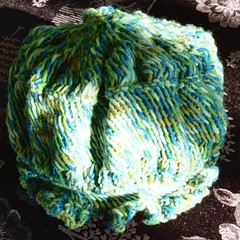
Shown to the left is the finished version of the hat Mac started about a week ago. It ended up taking two balls of Lana Grossa Cool Wool Big Print … and, blocked, is absolutely immense. I didn’t block out a gauge swatch first … shame on us, I guess. However, it reverts to its former small size when you toss it into the dryer, so I guess that it’s probably an OK child’s hat, all told.
TadMack: Ironically, adults are rather swoony over it — total strangers are putting it on and requesting hats of their own. But… the ruffle. People, the ruffle. It’s a hat for a toddler girl. Please, adults: just say no, okay??
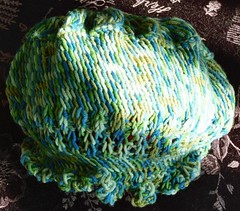
Mac: Here’s another shot of the “right” side. Note the quotes around that, because the purl side is much more attractive to most who’ve seen it. This stitch (herringbone) gives a nice, even presentation on the knit side, but gives a marvellous spiral / ridge on the purl side. Because it’s done in the round, it’s a spiral, and quite attractive.
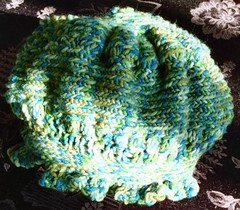
These last two will give you an idea of the “wrong” side, and you can see a bit more of the pattern in them. The basic idea here was to knit more of an increase than would let the hat lie flat, so that it’d have bobble-ish edges around the top. Then, it’s a round of purl, and then straight down for 10 rows, followed by a radical decrease (2×2 rib for 3 rows, *k2tog, p2tog* 1 row, 1×1 rib 3 rows), a band, and a frilled edge accomplished by essentially reversing that radical decrease.
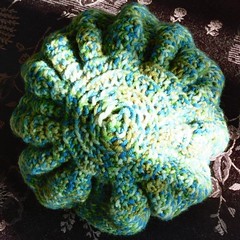
Here’s a better picture of the spiral & the top. One thing I must say, though: now that I’ve got this one, I’m attempting to duplicate it with minor modifications so that I’ll have a good pattern & can post it here.
Mac: I took the hat in to show to the yarn lady and she commented that I hadn’t followed a pattern. Well, no, that’s not the point, is it? But, she said it as if it were a bad thing not to have had a pattern. Umm… where do patterns come from, pray tell? Anyway, so that the yarn gods are now satisified, I have a pattern roughed out based upon this hat & on the things I want to change, so now I just have to follow that pattern … several times, because I’ve had several requests for this hat already. And yes, those requests are from adults. Sigh.

